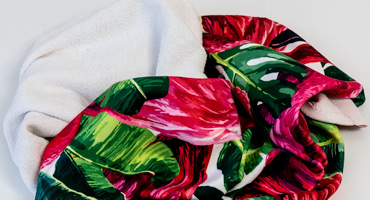Fabrics on which printing can be done are divided into three types: natural, synthetic or a mixture of natural and synthetic.
Natural fabrics
As the name suggests, these fabrics come from nature – specifically plants and animals. The fibers are extracted from natural resources and then, through a process (woven or threaded), transformed into a textile. For example, wool comes from sheep's coats, cotton from the seed pods of the cotton plant, while silk is obtained from the fibers of the silkworm.
Synthetic fabrics
Synthetic fabrics have a bad reputation because they are similar to plastic, but now, with the development of their production technology, they imitate natural fabrics very well. Sometimes the only way to distinguish synthetic fabrics from natural fabrics is the information on the product label. Some of these fabrics breathe well, others are very durable.
Synthetic fabrics are designed to be superior to natural ones in some aspects, such as elasticity and impermeability. These features have made them a favorite material for sportswear.
Printed fabrics / sublimation fabrics
When it comes to printing, natural fabrics seem to be more suitable than their synthetic "competitors". This is due to the fact that natural fabrics absorb liquids better. However, there are many printing techniques that allow, or are even "tailored" for printing on synthetic fabrics.
Fabric printing techniques:
- screen printing
-DTG printing
- transfer printing
- sublimation
- embroidery
Since our article concerns a technique called sublimation, let's take a closer look at its characteristics.
Sublimation
Preferred fabric: polyester,
Sublimation is one of the most revolutionary printing techniques. It is a method used for general printing in CMYK colors - i.e. full color. Sublimation is the most durable printing method, the print will not lose its quality, even after many washes.
Due to the way sublimation works, it can only be used on synthetic fabrics – more precisely, polyester. Sublimation can also be used on mixed fabrics, but we must remember that the predominant component must be polyester (at least 80% of the fabric composition).






